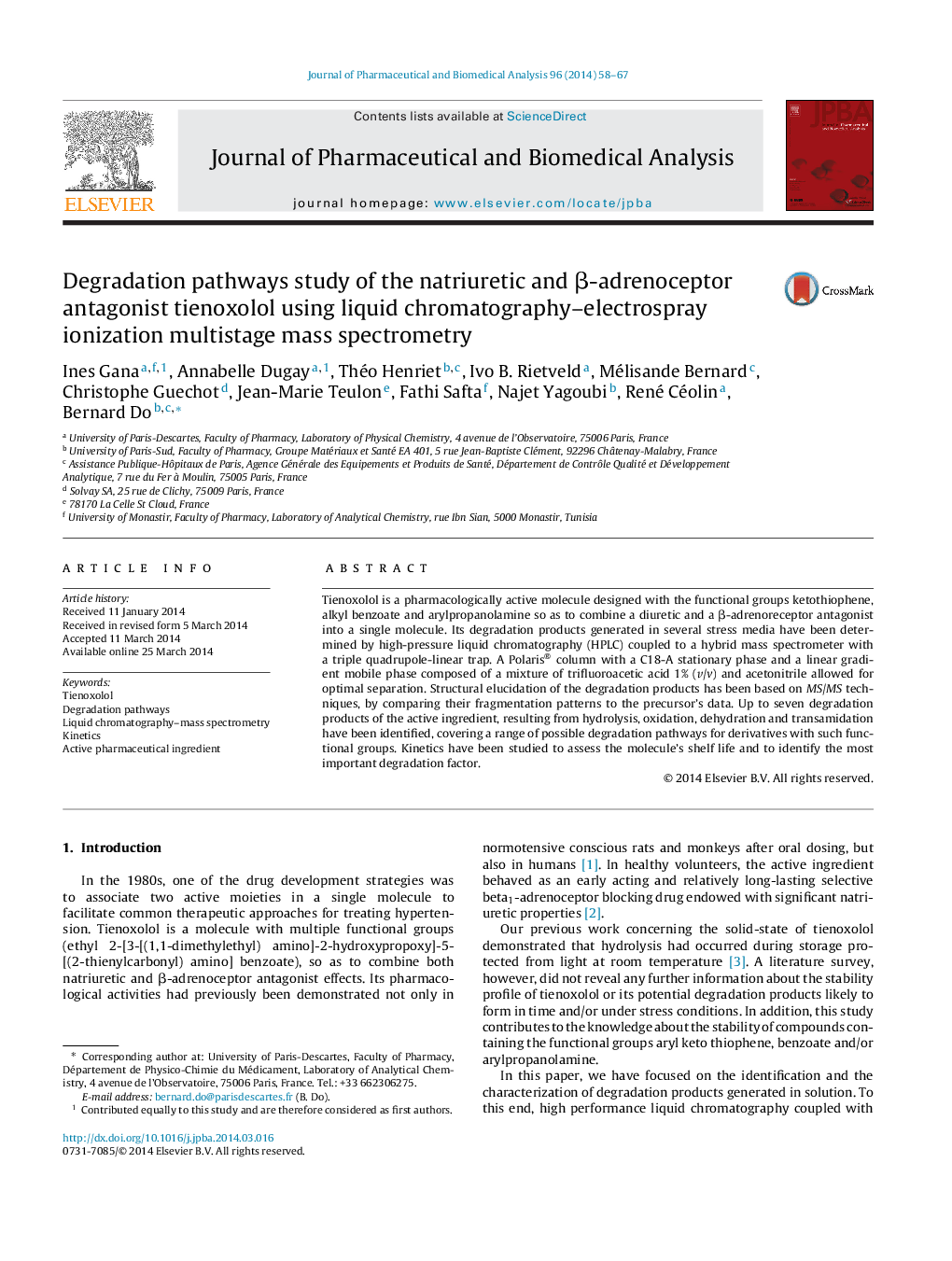| Article ID | Journal | Published Year | Pages | File Type |
|---|---|---|---|---|
| 1221654 | Journal of Pharmaceutical and Biomedical Analysis | 2014 | 10 Pages |
•The active substance tienoxolol contains ketothiophene, benzoate and arylpropanolamine groups.•Degradation kinetics were assessed by LC/ESI-MSn.•The structure of degradations products was elucidated by MSn studies.•Hydrolysis, oxidation, dehydration and transamidation have been identified.
Tienoxolol is a pharmacologically active molecule designed with the functional groups ketothiophene, alkyl benzoate and arylpropanolamine so as to combine a diuretic and a β-adrenoreceptor antagonist into a single molecule. Its degradation products generated in several stress media have been determined by high-pressure liquid chromatography (HPLC) coupled to a hybrid mass spectrometer with a triple quadrupole-linear trap. A Polaris® column with a C18-A stationary phase and a linear gradient mobile phase composed of a mixture of trifluoroacetic acid 1% (v/v) and acetonitrile allowed for optimal separation. Structural elucidation of the degradation products has been based on MS/MS techniques, by comparing their fragmentation patterns to the precursor's data. Up to seven degradation products of the active ingredient, resulting from hydrolysis, oxidation, dehydration and transamidation have been identified, covering a range of possible degradation pathways for derivatives with such functional groups. Kinetics have been studied to assess the molecule's shelf life and to identify the most important degradation factor.
Graphical abstractFigure optionsDownload full-size imageDownload as PowerPoint slide
